文章目录
- 3.8 线程同步
- 3.9互斥锁
- 互斥量
- 互斥量相关操作函数
- 3.10死锁
- 3.11读写锁
- 读写锁
- 读写锁相关操作函数
3.8 线程同步
问题:卖第0张、第-1张门票,三个线程买同一张门票等等。
原因:三个线程并发执行去抢占线程资源,A进来休眠6000微秒的时候,B、C也可能进来。多个线程同时处理一个共享资源,出现线程同步问题,操作必须是原子性的。
/*使用多线程实现买票的案例。有3个窗口,一共是100张票。
*/#include <stdio.h>
#include <pthread.h>
#include <unistd.h>// 全局变量,所有的线程都共享这一份资源。
int tickets = 100;//回调函数,函数指针
void * sellticket(void * arg) {// 卖票while(tickets > 0) {usleep(6000);//睡眠6000微秒printf("%ld 正在卖第 %d 张门票\n", pthread_self(), tickets);tickets--;}return NULL;
}int main() {// 创建3个子线程,子线程做同样的事情,主线程不做买票操作,只做回收子线程资源等pthread_t tid1, tid2, tid3;pthread_create(&tid1, NULL, sellticket, NULL);pthread_create(&tid2, NULL, sellticket, NULL);pthread_create(&tid3, NULL, sellticket, NULL);// 回收子线程的资源,阻塞,连接pthread_join(tid1, NULL);pthread_join(tid2, NULL);pthread_join(tid3, NULL);// 设置线程分离。// pthread_detach(tid1);// pthread_detach(tid2);// pthread_detach(tid3);pthread_exit(NULL); // 退出主线程return 0;
}显示错误结果:
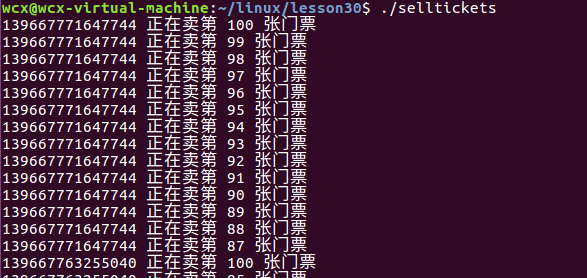
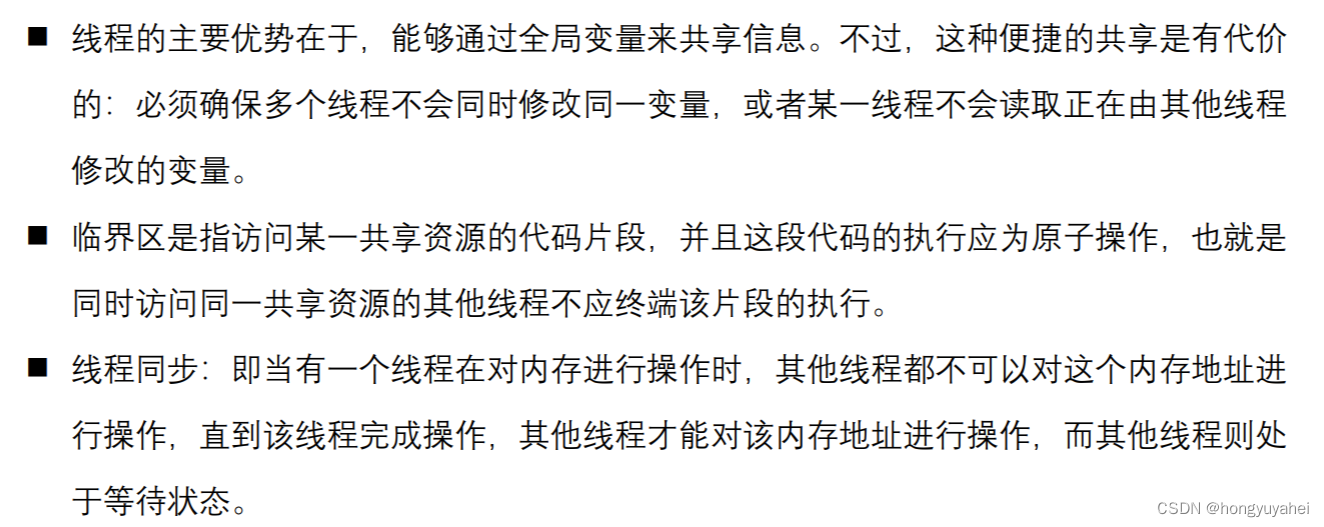 倒数第四行:终端 -> 中断
倒数第四行:终端 -> 中断
线程同步会带来一定的效率问题,但是是必要的。
3.9互斥锁
互斥量
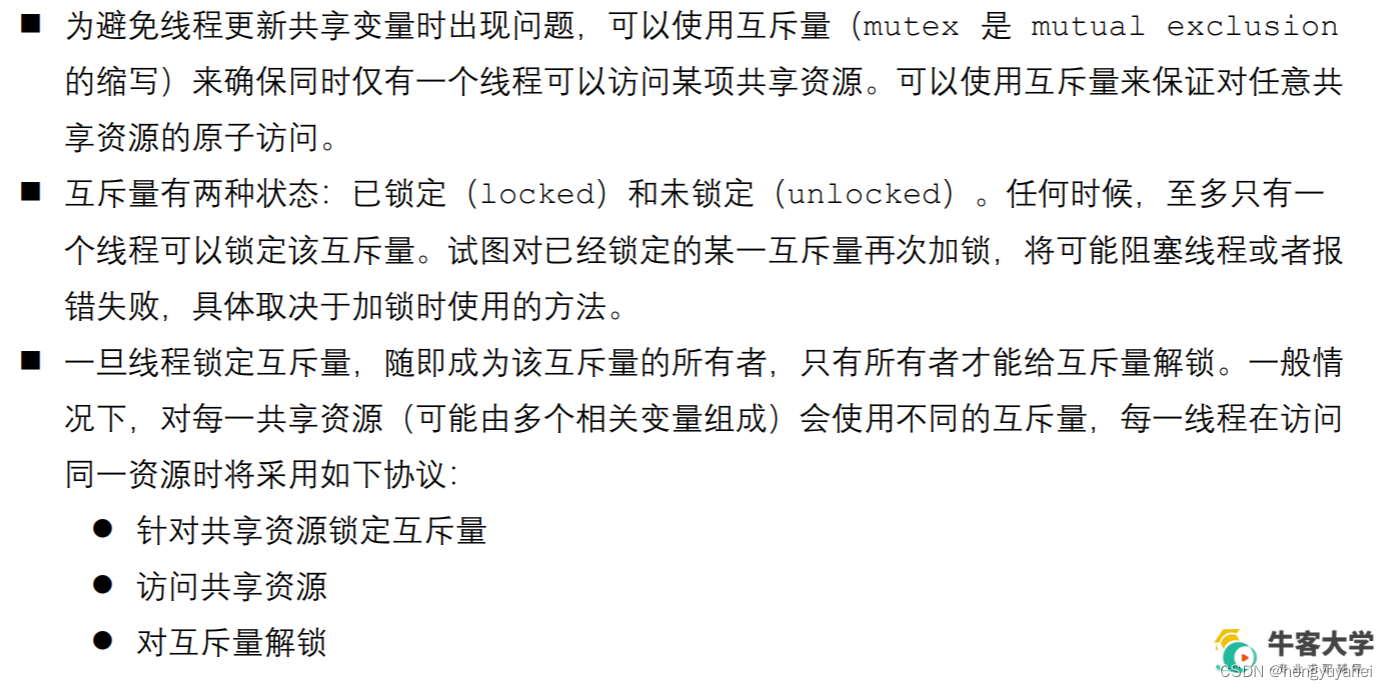
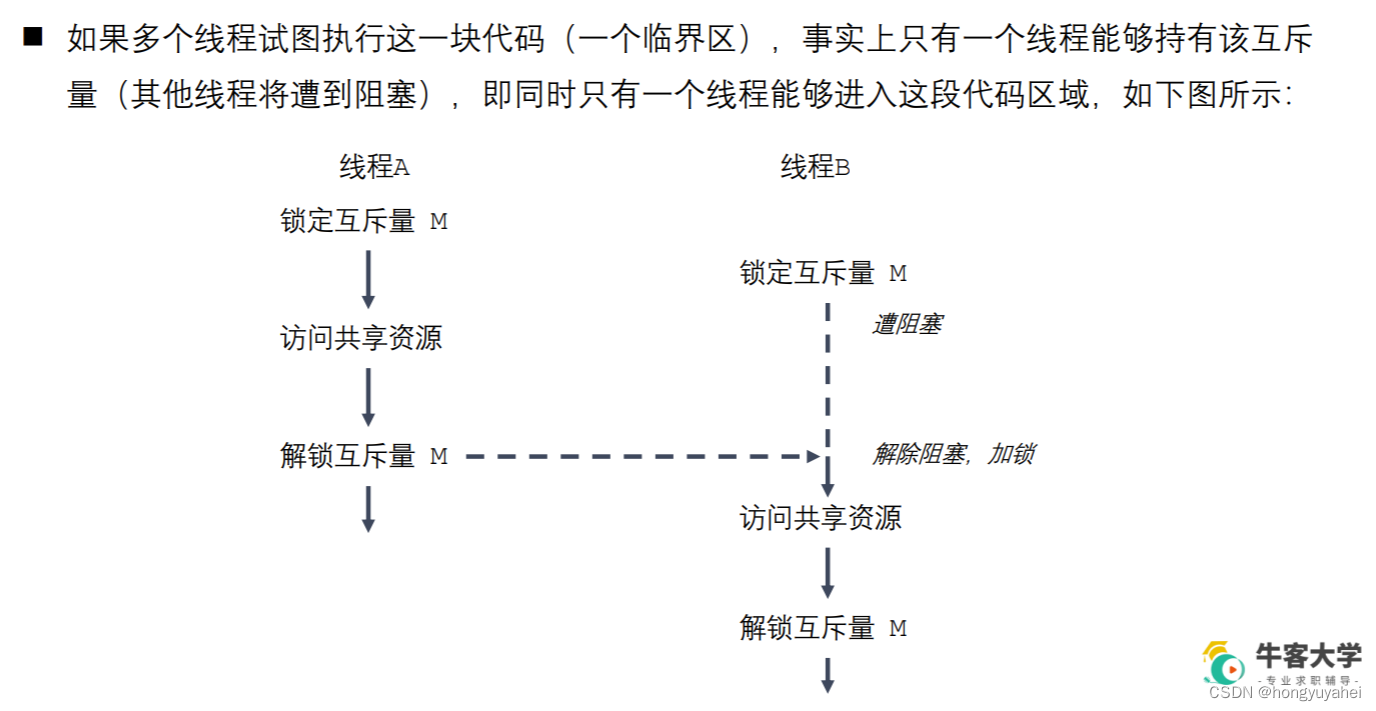
互斥量相关操作函数
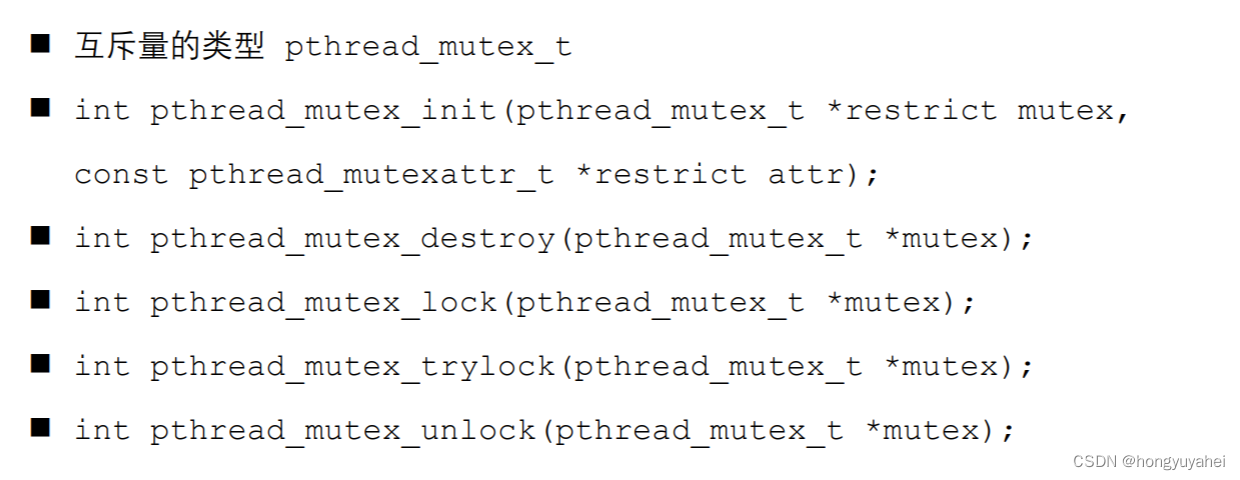
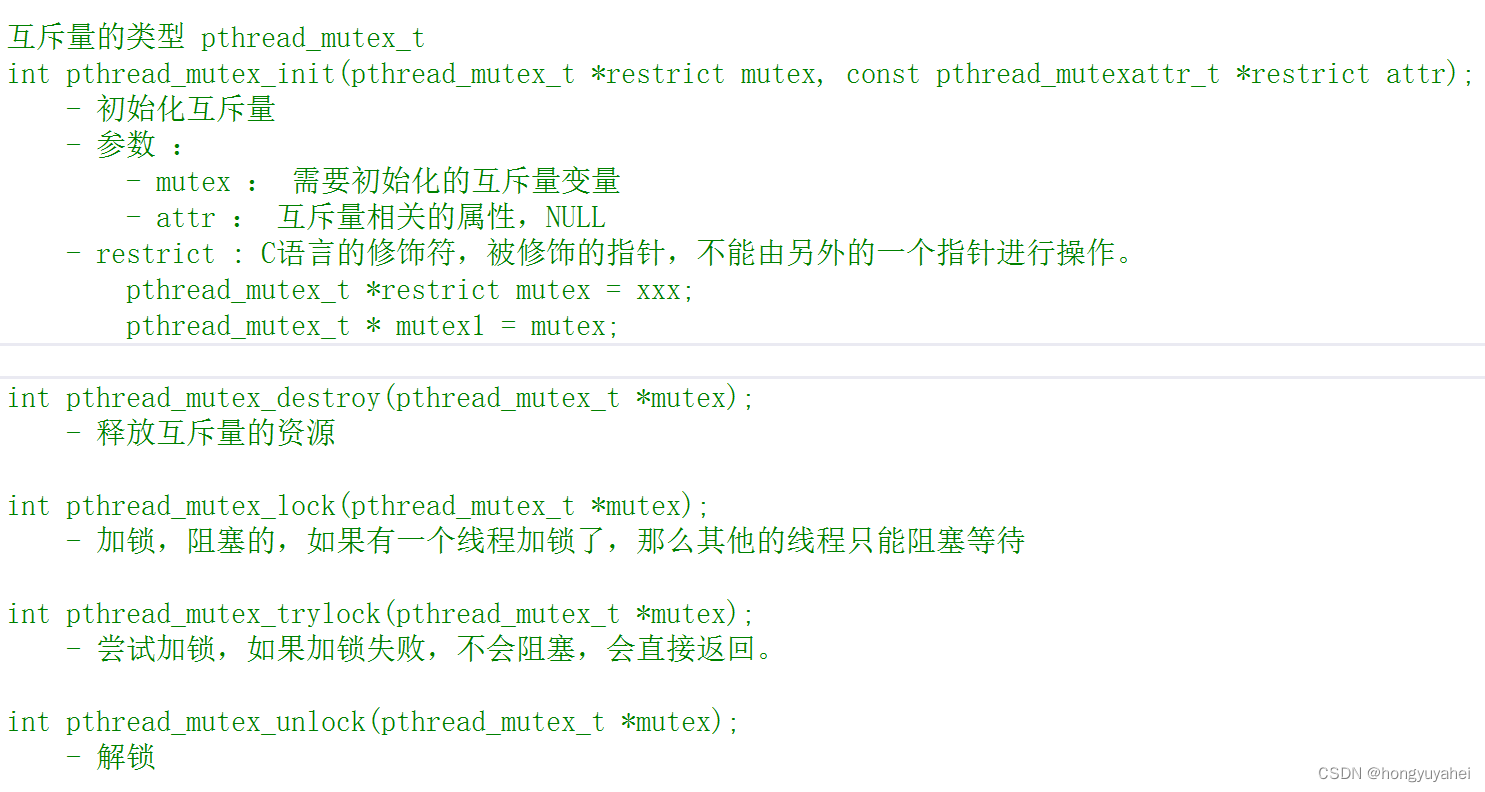 restrict : C语言的修饰符,被修饰的指针,不能由另外的一个指针进行操作。
restrict : C语言的修饰符,被修饰的指针,不能由另外的一个指针进行操作。
pthread mutex t *restrict mutex = xxx;
pthread mutex t * mutex1 = mutex;
是不可以通过mutex1去操作xxx的
#include <stdio.h>
#include <pthread.h>
#include <unistd.h>// 全局变量,所有的线程都共享这一份资源。
int tickets = 100;// 创建一个互斥量
pthread_mutex_t mutex;void * sellticket(void * arg) {// 卖票while(1) {// 加锁pthread_mutex_lock(&mutex);if(tickets > 0) {usleep(6000);printf("%ld 正在卖第 %d 张门票\n", pthread_self(), tickets);tickets--;}else {// 解锁pthread_mutex_unlock(&mutex);break;}// 解锁pthread_mutex_unlock(&mutex);}return NULL;
}int main() {// 初始化互斥量pthread_mutex_init(&mutex, NULL);// 创建3个子线程pthread_t tid1, tid2, tid3;pthread_create(&tid1, NULL, sellticket, NULL);pthread_create(&tid2, NULL, sellticket, NULL);pthread_create(&tid3, NULL, sellticket, NULL);// 回收子线程的资源,阻塞pthread_join(tid1, NULL);pthread_join(tid2, NULL);pthread_join(tid3, NULL);pthread_exit(NULL); // 退出主线程// 释放互斥量资源pthread_mutex_destroy(&mutex);return 0;
}
3.10死锁
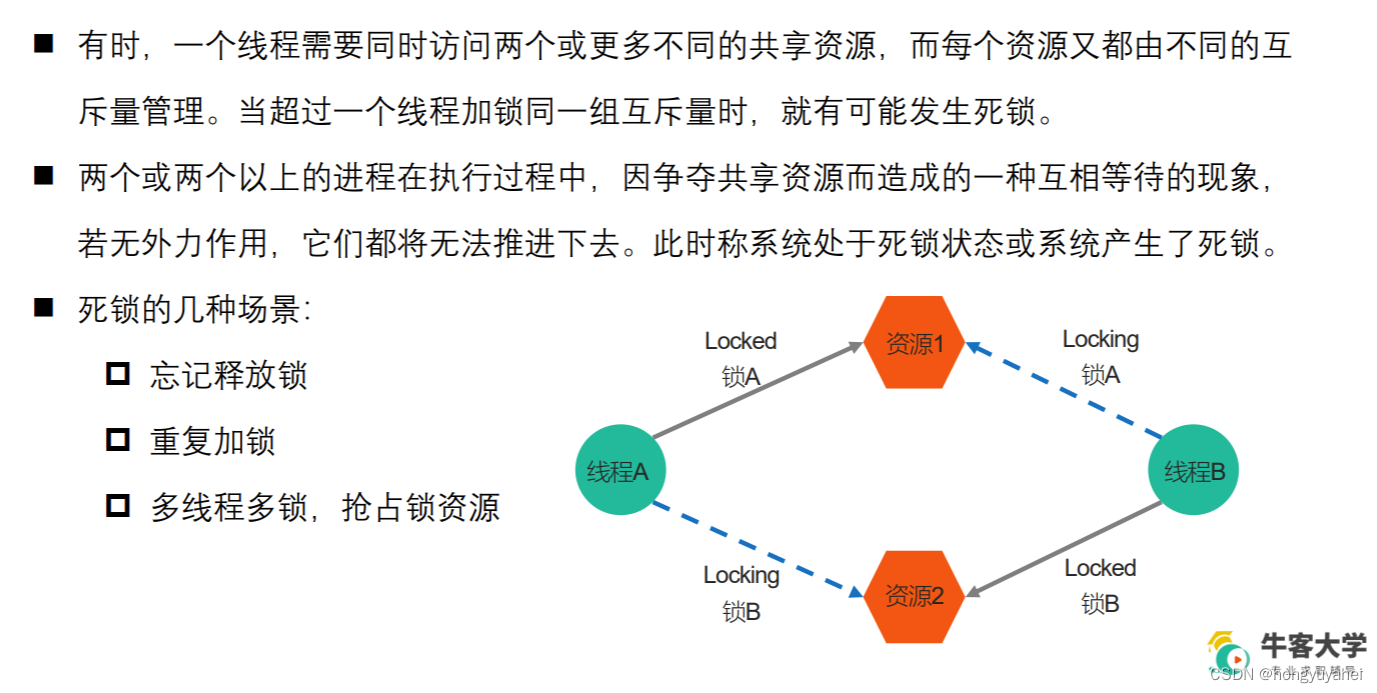 重复枷锁的一种可能:
重复枷锁的一种可能:
void B(){lock();
}
void A(){lock();B();
}
#include <stdio.h>
#include <pthread.h>
#include <unistd.h>// 创建2个互斥量
pthread_mutex_t mutex1, mutex2;void * workA(void * arg) {pthread_mutex_lock(&mutex1);sleep(1);pthread_mutex_lock(&mutex2);printf("workA....\n");//先解2锁再解1锁pthread_mutex_unlock(&mutex2);pthread_mutex_unlock(&mutex1);return NULL;
}void * workB(void * arg) {pthread_mutex_lock(&mutex2);sleep(1);pthread_mutex_lock(&mutex1);printf("workB....\n");pthread_mutex_unlock(&mutex1);pthread_mutex_unlock(&mutex2);return NULL;
}int main() {// 初始化互斥量pthread_mutex_init(&mutex1, NULL);pthread_mutex_init(&mutex2, NULL);// 创建2个子线程pthread_t tid1, tid2;pthread_create(&tid1, NULL, workA, NULL);pthread_create(&tid2, NULL, workB, NULL);// 回收子线程资源pthread_join(tid1, NULL);pthread_join(tid2, NULL);// 释放互斥量资源pthread_mutex_destroy(&mutex1);pthread_mutex_destroy(&mutex2);return 0;
}上述代码产生死锁:线程1获得锁1且申请锁2,线程2获得锁2且申请锁一。
产生死锁的四个必要条件:
互斥条件、占有且等待条件、不可抢占条件、循环等待条件。
3.11读写锁
读写锁
读写锁比互斥锁效率要高一点,读的时候是并发执行,而互斥锁是串行
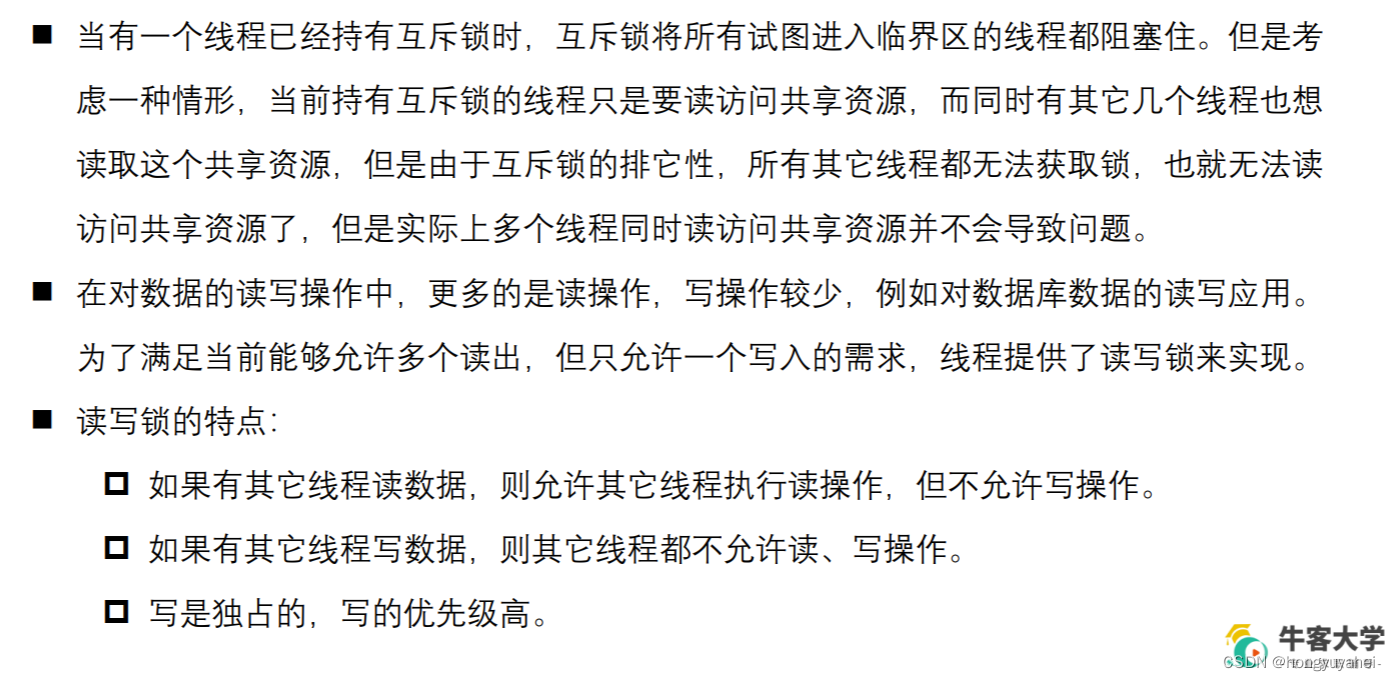
读写锁相关操作函数
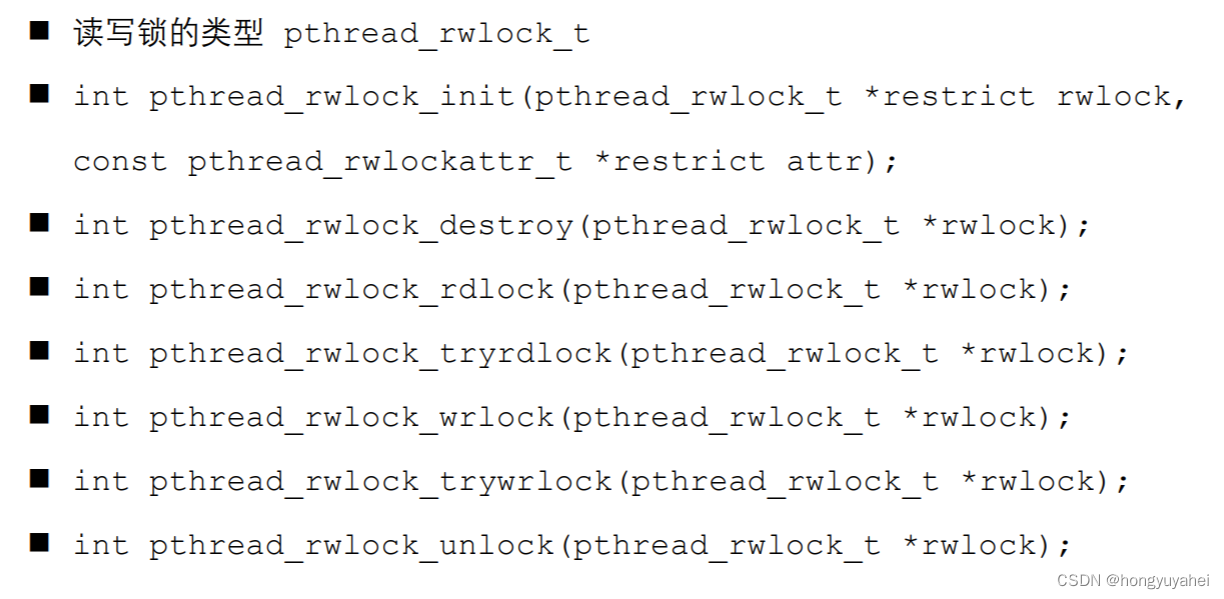
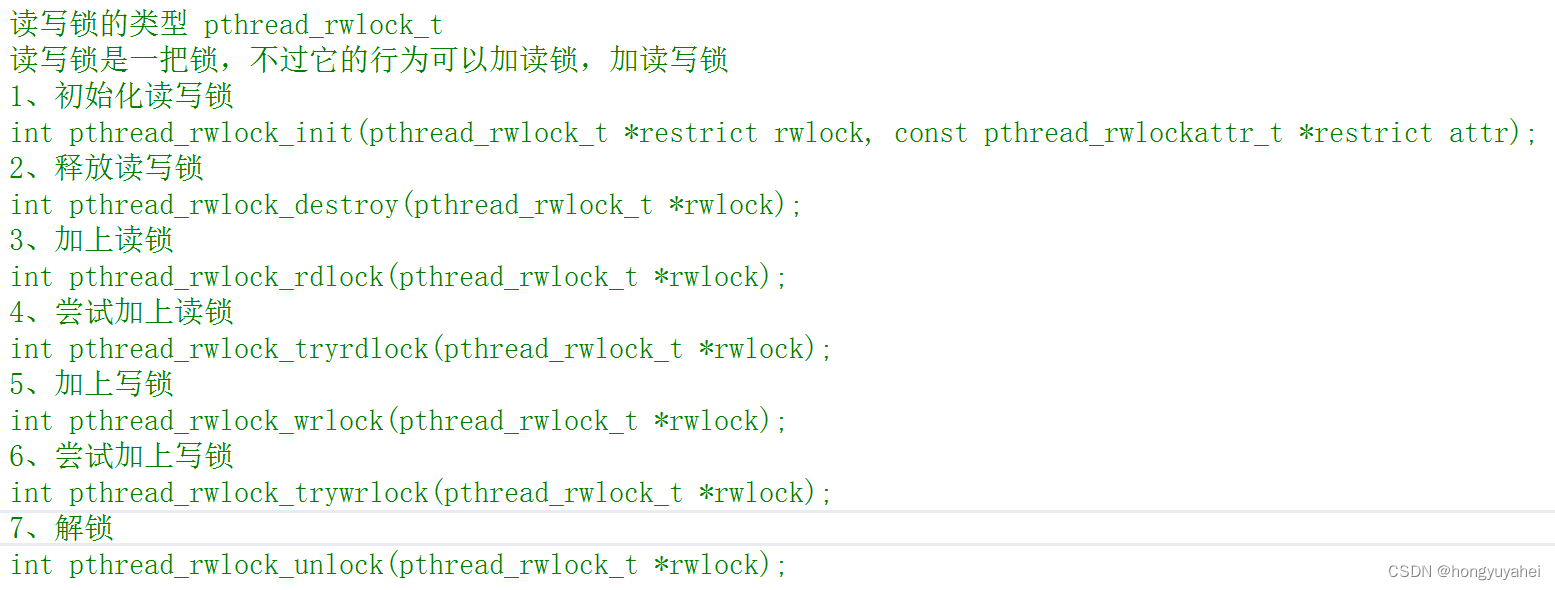
#include <stdio.h>
#include <pthread.h>
#include <unistd.h>// 创建一个共享数据
int num = 1;
// pthread_mutex_t mutex;
pthread_rwlock_t rwlock;void * writeNum(void * arg) {while(1) {pthread_rwlock_wrlock(&rwlock);num++;printf("++write, tid : %ld, num : %d\n", pthread_self(), num);pthread_rwlock_unlock(&rwlock);usleep(100);}return NULL;
}void * readNum(void * arg) {while(1) {pthread_rwlock_rdlock(&rwlock);printf("===read, tid : %ld, num : %d\n", pthread_self(), num);pthread_rwlock_unlock(&rwlock);usleep(100);}return NULL;
}int main() {pthread_rwlock_init(&rwlock, NULL);// 创建3个写线程,5个读线程pthread_t wtids[3], rtids[5];for(int i = 0; i < 3; i++) {pthread_create(&wtids[i], NULL, writeNum, NULL);}for(int i = 0; i < 5; i++) {pthread_create(&rtids[i], NULL, readNum, NULL);}// 设置线程分离for(int i = 0; i < 3; i++) {pthread_detach(wtids[i]);}for(int i = 0; i < 5; i++) {pthread_detach(rtids[i]);}//若不加该语句,return 0的话,主线程的退出会影响子线程的执行//加上该语句后,主线程的退出不影响子线程的执行pthread_exit(NULL);pthread_rwlock_destroy(&rwlock);return 0;
}的区别是什么?)



)






:依赖注入)

)





